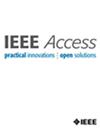Unveiling the Physics Secrets of Bajiquan: A STEAM-Integrated Teaching Approach
IF 3.4
3区 计算机科学
Q2 COMPUTER SCIENCE, INFORMATION SYSTEMS
引用次数: 0
Abstract
A compelling vision is emerging in education - integrating the arts with STEM, forming a holistic approach known as STEAM. Leveraging recent advances in motion analysis technology, this study explores the potential of a STEAM-based pedagogy incorporating the Chinese martial art of Bajiquan to enhance college students’ understanding and application of physics principles. An empirical study was conducted with sophomore university students to investigate the feasibility of this approach. A three-phase intervention utilizing STEAM principles was implemented, focusing on Bajiquan movement practice and analysis, supplemented by instructional videos and images created using motion analysis tools to visualize the underlying physics concepts. These materials highlighted principles such as “Conservation of momentum,” “Linear dynamics,” and “Rotational dynamics” within the context of Bajiquan techniques. Learning interest questionnaires and physics knowledge tests were administered before and after the intervention to assess its impact. One-way repeated measures ANOVA and paired samples t-tests revealed significant improvements in learning interest and physics knowledge scores following the intervention. These findings suggest that integrating Bajiquan and motion analysis within a STEAM framework can promote a deeper understanding of physics concepts and enhance students’ overall engagement with the subject matter.求助全文
约1分钟内获得全文
求助全文
来源期刊

IEEE Access
COMPUTER SCIENCE, INFORMATION SYSTEMSENGIN-ENGINEERING, ELECTRICAL & ELECTRONIC
CiteScore
9.80
自引率
7.70%
发文量
6673
审稿时长
6 weeks
期刊介绍:
IEEE Access® is a multidisciplinary, open access (OA), applications-oriented, all-electronic archival journal that continuously presents the results of original research or development across all of IEEE''s fields of interest.
IEEE Access will publish articles that are of high interest to readers, original, technically correct, and clearly presented. Supported by author publication charges (APC), its hallmarks are a rapid peer review and publication process with open access to all readers. Unlike IEEE''s traditional Transactions or Journals, reviews are "binary", in that reviewers will either Accept or Reject an article in the form it is submitted in order to achieve rapid turnaround. Especially encouraged are submissions on:
Multidisciplinary topics, or applications-oriented articles and negative results that do not fit within the scope of IEEE''s traditional journals.
Practical articles discussing new experiments or measurement techniques, interesting solutions to engineering.
Development of new or improved fabrication or manufacturing techniques.
Reviews or survey articles of new or evolving fields oriented to assist others in understanding the new area.
 求助内容:
求助内容: 应助结果提醒方式:
应助结果提醒方式:


